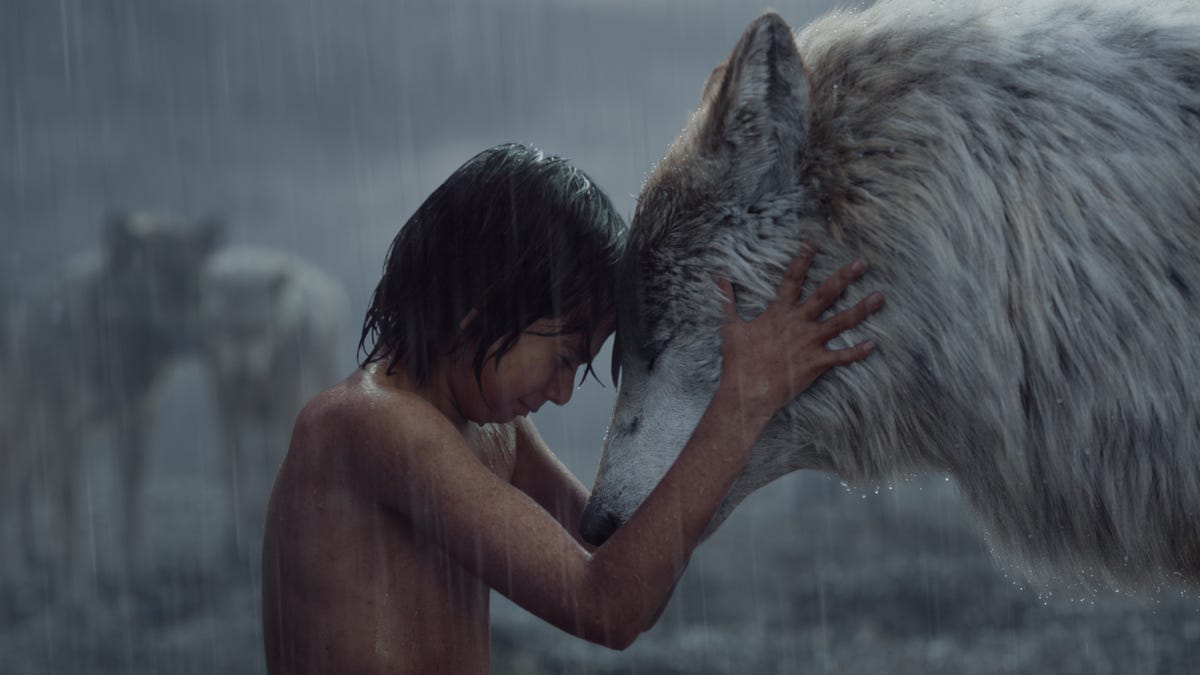Effects of 'The Jungle Book' are bear necessities for an Oscar
FX expert Adam Valdez reveals how the film's digital jungle and computer-generated creatures earned an Academy Award.

Starring a herd of personality-packed digital animals in a lush computer-generated jungle, Disney 's "The Jungle Book" deserves its Oscar for best visual effects. We spoke to Adam Valdez, one of the effects wizards at London-based VFX studio Moving Picture Company (MPC), about how they made CGI animals walk like you, talk like you, and learn to be human too.
The film is the latest in Disney's live action updates of its animated classics. Right from the start, the reboot's director Jon Favreau had to oversee a balance between modern photorealism and the whimsical charm of the 1967 cartoon musical. Adam Valdez, who collected the Oscar on stage, describes how the team had to figure out how to emulate the charm of the original in an aesthetic that was more grounded and realistic.
"When you take away cartoony action or looks," he says, "you change the tone of a piece and we had to figure out how much beauty, wonder or fun we could add back in a less cartoony way."
Valdez describes the film's computer-generated photorealism as a fun and rewarding challenge, but also a lot of hard work. Over 800 talent artists and technologists laboured to produce the film at MPC's studios in London, Bangalore and Los Angeles, not to mention the other effects artists at parent company Technicolor and other effects houses who collaborated on the film.
The film's setting looks incredibly realistic, but it's entirely computer-generated. "We had teams spend weeks in the jungles of India capturing and studying the leaves, the trees, the moss," explains Valdez. MPC then used cutting-edge image rendering technology called ray-tracing, which follows the path of light as it bounces around a scene, to build the environment right down to the smallest detail. "That required the development of techniques to scatter millions of objects, such as dead leaves, twigs, moss and tiny plants on the ground."
Recreating a real jungle is one thing. Creating animals that move like animals and talk like humans is quite another. MPC conjured animal characters including Baloo the bear, Bagheera the panther, Shere Khan the tiger and Kaa the snake (voiced by Bill Murray, Ben Kingsley, Idris Elba and Scarlett Johansson). "Our teams took a lot of time looking at videos of animals and studied their biology in order to capture their likeness," says Valdez.
With only one human actor in the cast, MPC created 54 species of animals and 224 unique animals from skeletons to whiskers, with new software were required to realistically simulate muscles, skin and fur. "Artists at MPC are anatomy specialists, sculptors, students of physics, and actors," says Valdez. "You need all of these skills -- and the careful application of reference images and video -- to construct, then animate, then render a realistic animal."
The animals were designed to have their own character, although the animators did draw on some of the physical performances from the all-star cast -- which apparently meant watching a lot of Bill Murray movies. "Bill Murray's delivery often comes with certain facial cues, and Jon Favreau wanted us to deliver that," says Valdez. "Our animators who worked on Baloo did study Bill Murray's films in detail to derive the performances." Nice work if you can get it!
Drawing on their experience creating motion-captured characters like Gollum in "Lord of the Rings" and the digital apes of the "Planet of the Apes" series, Peter Jackson's effects house Weta created one major character, the hulking gigantopithecus King Louie. Because apes are already pretty human-like, the performance can be directly based on the actor's appearance. Louie was voiced by Christopher Walken, and aspects of his distinctive visage were directly integrated into the design.
Mixing the animal and human aspects into an animated character is a delicate balance. Because our reactions to human faces are so ingrained in our brains, a character design could tip over into the "uncanny valley", when a face makes us uncomfortable. "When it gets too human," says Valdez, "suddenly you just react oddly and you know you've crossed a line."
The entire jungle backdrop of "The Jungle Book" was a computer-generated creation, right down to the leaves, twigs and moss.
"The Jungle Book" is up against "Rogue One: A Star Wars Story", which also uses motion-capture and CGI to create non-human characters -- and to digitally resurrect the late Peter Cushing. With Martin Scorsese's next film "The Irishman" using digital de-aging to knock a few years off Robert De Niro and Al Pacino, it seems that more and more films will alter the faces of their stars.
"It remains the hardest thing to do in CGI," says Valdez of changing actor's faces, "because we are so sensitive to what people look like and feel like, and sensitive to what is real and human." But more importantly, he stresses the importance of an actor's craft. "The thing to remember is that actors interpret roles. They read the script and work with the director to hopefully bring a believable but also unique human being to the screen. They try to really just be the person and the camera naturally captures that. It's the big magic of movies."
Asked if CG creations could replace human actors, Valdez speculates that "If an AI computer someday via deep learning becomes the ultimate master of human facial cues and could be fed a human profile for behavior, maybe, maybe it could start to fool us -- but that's all theoretical and a way off."
Tech Culture: From film and television to social media and games, here's your place for the lighter side of tech.
Batteries Not Included: The CNET team shares experiences that remind us why tech stuff is cool.

